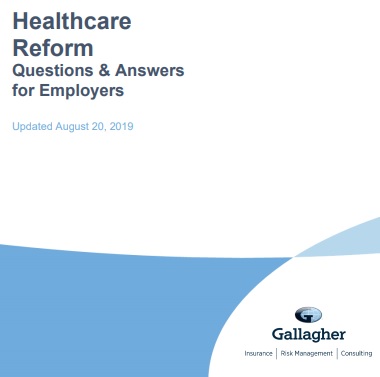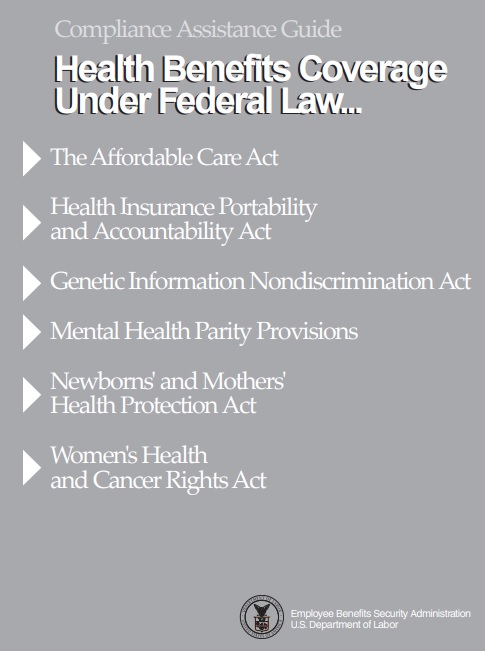ACA Full-time Employee
ALE – Applicable Large Employer
Calculator
Full-time Employee
ALE – Applicable Large Employer
A full-time employee for any calendar month is an employee who has on average at least 30 hours of service per week during the calendar month, or at least 130 hours of service during the calendar month.
ACA FTE Calculator Health Care.Gov
Full-Time Equivalent Employees
An employer determines its number of full-time-equivalent employees for a month in the two steps that follow:
- Combine the number of hours of service of all non-full-time employees for the month but do not include more than 120 hours of service per employee, and
- Divide the total by 120.
An employer’s number of full-time equivalent employees (or part-time employees) is only relevant to determining whether an employer is an ALE. An ALE need not offer minimum essential coverage to its part-time employees to avoid an employer shared responsibility payment. A part-time employee’s receipt of the premium tax credit for purchasing coverage through the Marketplace cannot trigger an employer shared responsibility payment.
Reporting Requirements for Applicable Large Employers
Applicable large employers – generally those with 50 or more full-time employees, including full-time equivalent employees
Under the health care law, applicable large employers – those with 50 or more full-time employees, including full-time equivalent employees, in the preceding year – are required to report some information regarding health coverage by filing information returns with the IRS and furnishing statements to full-time employees.
If you’re an ALE, you report information about health coverage you offered to each full-time employee, or to show that you didn’t offer coverage to the full-time employee. This information will help the IRS determine whether an employer shared responsibility payment applies to your organization and is also used in determining the eligibility of employees for the premium tax credit.
Here are some key points about the information reporting requirements under the health care law:
- If you are an ALE, you are required to report certain information to the IRS, as well as to all of your full-time employees, regardless of whether you offer health insurance coverage.
- There are new IRS forms that ALEs will use to complete this reporting – Form 1095-C, Employer-Provided Health Insurance Offer and Coverage, and Form 1094-C, Transmittal of Employer-Provided Health Insurance Offer and Coverage Information Returns. Form 1094-C is used to report to the IRS summary information and to transmit Forms 1095-C to the IRS. Form 1095-C is used to report information about each full-time employee, and is the form that is furnished to full-time employees.
- If you are an ALE, you are required to furnish each full-time employee with a statement, Form 1095-C, by Jan. 31 of the calendar year following the calendar year to which the information relates.
- If you are an ALE, you must file the information returns Forms 1094-C and 1095-C with the IRS no later than Feb. 28 – or March 31 if filed electronically – of the year immediately following the calendar year to which the return relates. Because the 2016 deadline falls on a Sunday, the Feb. 28 due date will shift to Feb. 29, 2016.
- • If you’re an ALE that sponsors a self-insured group health plan for your employees, you also must report information about employees and their dependents who enroll in the coverage, whether or not the employee is a full-time employee.
How to Report
If you file 250 or more information returns during the calendar year, you must file Form 1095-C and Form 1094-C with the IRS electronically. You will meet your requirement to furnish a statement to your full-time employees if you provide each full-time employee with a copy of the Form 1095-C that you file with the IRS. Statements must be furnished to employees on paper by mail or hand delivered, unless the recipient affirmatively consents to receive the statement in an electronic format. For information on using substitute forms and alternative furnishing methods that apply in limited circumstances, see IRS
- Questions and Answers about Information Reporting by Employers on Form 1094-C and Form 1095-C and
- employer reporting requirements.
- Affordable Care Act: Reporting Requirements for Applicable Large Employers.
- Affordable Care Act Tax Provisions for Employers
Determine if you are an
ALE - Applicable Large Employer - over 50 lives - Publication 5208
-
FTE Calculator Health Care.Gov
- Our webpage on FTE Full Time Equivalent and ALE Applicable Large Employer
- Guidelines – ACA Full Time Employee Definition
VIDEO
“full-time employee” means,
For the EmployER Mandates – In general The term fte with respect to any month, an employee who is employed on average at least 30 hours of service per week. 26 USC § 4980H Compare with the definition of employee – under California AB 1083 to comply with Health Care Reform.
- Can you make them 1099 independent contractors and not employees?
Health Coverage #Guide
Art Gallagher
Health Care Reform FAQ's
Understanding Health Reform
***********************************
Compliance #Assistance Guide from DOL.Gov Health Benefits under Federal Law
- Health Care Reform Explained Kaiser Foundation Cartoon VIDEO
- Choosing a Health Plan for Your Small Business VIDEO DOL.gov
- ACA Quick Reference Guide California Small Group Employers Revision 2020 Word & Brown
- kff.org/health-policy-101/
Just Enter your census or securely send us an excel spreadsheet or a list of employees and get instant proposals
for all these companies that we are Authorized Agents for in California
Related Pages
Carve Outs & Common Ownership
- Common Ownership – Affiliated Companies – Corporations
- Our webpage on Section 125 POP Premium Only Plans
ACA and Employers:
How Seasonal Workers Affect Your ALE Status
When determining if your organization is an applicable large employer – which is also known as an ALE – you must measure your workforce by counting all your employees. However, there is an exception for seasonal workers.
If an employer’s workforce exceeds 50 full-time employees for 120 days or fewer during a calendar year, and the employees in excess of 50 who were employed during that period of no more than 120 days were seasonal workers, the employer is not considered an applicable large employer.
A seasonal worker for this purpose is an employee who performs labor or services on a seasonal basis. For example, retail workers employed exclusively during holiday seasons are seasonal workers.
The terms seasonal worker and seasonal employee are both used in the employer shared responsibility provisions, but in two different contexts. Only the term seasonal worker is relevant for determining whether an employer is an applicable large employer subject to the employer shared responsibility provisions. For this purpose, employers may apply a reasonable, good faith interpretation of the term “seasonal worker.”
To learn more about this topic and about when the definition of a seasonal employee is applicable, see our Questions and Answers page.
See the Determining if an Employer is an Applicable Large Employer page on IRS.gov/aca for details about counting full-time and full-time equivalent employees.
“small employer” redefined to include groups of up to 100 employees.
California state law has redefined “small employer” to include groups of up to 100 employees. The determination of employer group size must be made annually and groups must adhere to the method for counting full-time employees and full time equivalent employees outlined in Section 4980H(c)(2) of the Internal Revenue Code. Notice 2014 – 49 The definition of large group requires the group to have a combined total of at least 101 full-time and full-time-equivalent employees.
EmployER Definition – Health Care Reform
An example of how to determine whether a company is a small group for the purpose of purchasing group coverage is provided below. The methodology considers both full-time employees and full-time-equivalent employees.
- Company Y has 40 full-time employees for each calendar month during 2015.
- Company Y also has 20 part-time employees for each calendar month during 2015, each of whom has 60 hours of service per month.
- Now, combine the hours of service of the part-time employees for a month: [20 x 60 = 1,200].
- Dividing the combined hours of service of the part-time employees by 120* equals 10 [1,200/120 = 10]. This number, 10, represents the number of Company Y’s full-time equivalent employees for each month during 2015.
- Company Y adds up the total number of full-time employees for each calendar month of 2015, which is 480 [40 x 12 = 480].
- Company Y adds up the total number of full-time equivalent employees for each calendar month of 2015, which is 120 [10 x 12 = 120].
- Company Y adds those two numbers together and divides the total by 12, which equals 50 [(480 + 120 = 600)/12 = 50].
In this example company Y meets the size criteria for a small group because the total number of full-time and full-time equivalent employees for at least 50 percent of the preceding calendar year equals 50. Groups must consider additional IRS rules in making their final determination of whether the group is large or small, and some exceptions may apply.
On the Master Group Application for Small Business be sure to fill in Section 2, #8f. (In the scenario above, the number to fill in is 50 FTE and FTE Equivalent.) See the highlighted areas of section 2, page 2 of the application below.
* The number of 120 is stipulated by Internal Revenue Code 4980H(c)(2): “. . . in addition to the number of full-time employees for any month otherwise determined, include for such month a number of full-time employees determined by dividing the aggregate number of hours of service of employees who are not full-time employees for the month by 120”.
Basic ALE Determination Examples
Example 1 –
Employer is Not an ALE
- Company X has 40 full-time employees for each calendar month during 2016.
- Company X also has 15 part-time employees for each calendar month during 2016 each of whom have 60 hours of service per month.
- When combined, the hours of service of the part-time employees for a month totals 900 [15 x 60 = 900].
- Dividing the combined hours of service of the part-time employees by 120 equals 7.5 [900 / 120 = 7.5]. This number, 7.5, represents the number of Company X’s full-time-equivalent employees for each month during 2016.
- Employer X adds up the total number of full-time employees for each calendar month of 2016, which is 480 [40 x 12 = 480].
- Employer X adds up the total number of full-time equivalent employees for each calendar month of 2016, which is 90 [7.5 x 12 = 90].
- Employer X adds those two numbers together and divides the total by 12, which equals 47.5 [(480 + 90 = 570)/12 = 47.5].
- Because the result is not a whole number, it is rounded to the next lowest whole number, so 47 is the result.
- So, although Company X has 55 employees in total [40 full-time and 15 part-time] for each month of 2016, it has 47 full-time employees (including full-time equivalent employees) for purposes of ALE determination.
- Because 47 is less than 50, Company X is not an ALE for 2017.
Example 2 –
Employer is an ALE
- Company Y has 40 full-time employees for each calendar month during 2016.
- Company Y also has 20 part-time employees for each calendar month during 2016, each of whom has 60 hours of service per month.
- When combined, the hours of service of the part-time employees for a month totals 1,200 [20 x 60 = 1,200].
- Dividing the combined hours of service of the part-time employees by 120 equals 10 [1,200 / 120 = 10]. This number, 10, represents the number of Company Y’s full-time-equivalent employees for each month during 2016.
- Employer Y adds up the total number of full-time employees for each calendar month of 2016, which is 480 [40 x 12 = 480].
- Employer Y adds up the total number of full-time equivalent employees for each calendar month of 2016, which is 120 [10 x 12 = 120].
- Employer Y adds those two numbers together and divides the total by 12, which equals 50 [(480 + 120 = 600)/12 = 50].
- So, although Company Y only has 40 full-time employees, it is an ALE for 2017 due to the hours of service of its full-time equivalent employees.
Additional examples can be found in section 54-4980H-2 of the ESRP regulations.
Learn More ⇒ IRS.Gov




